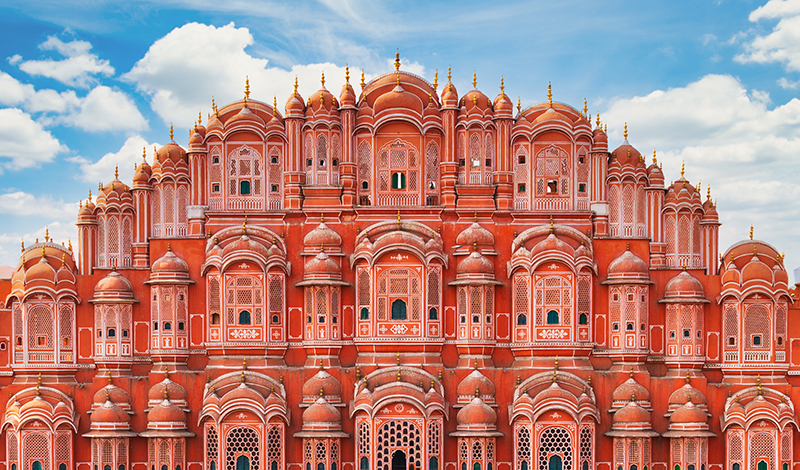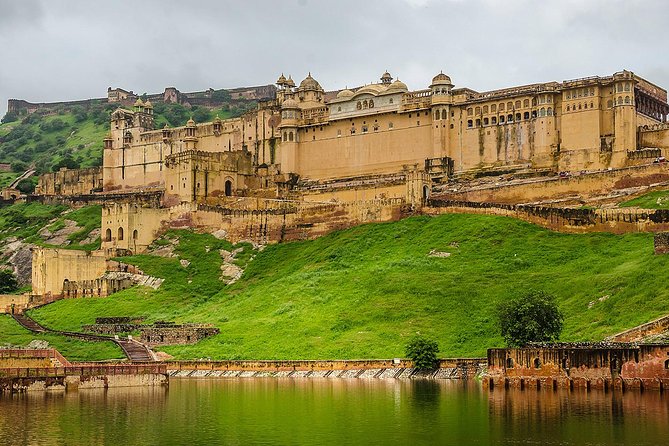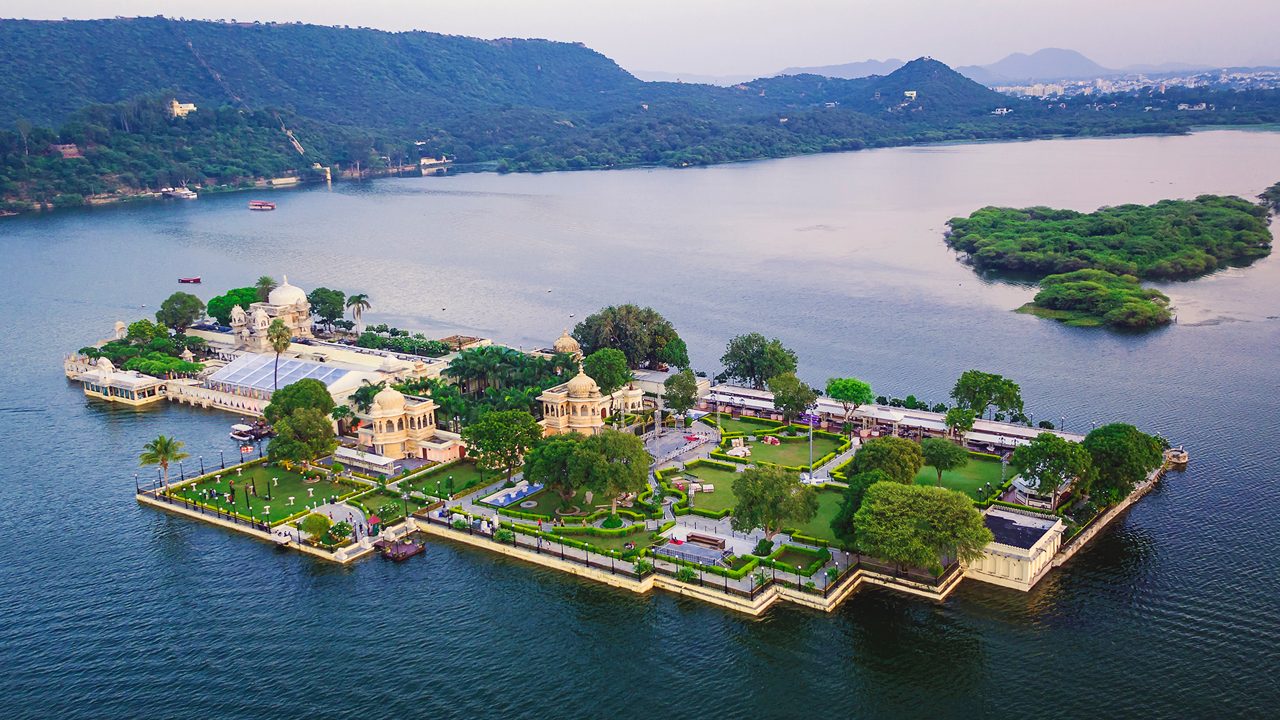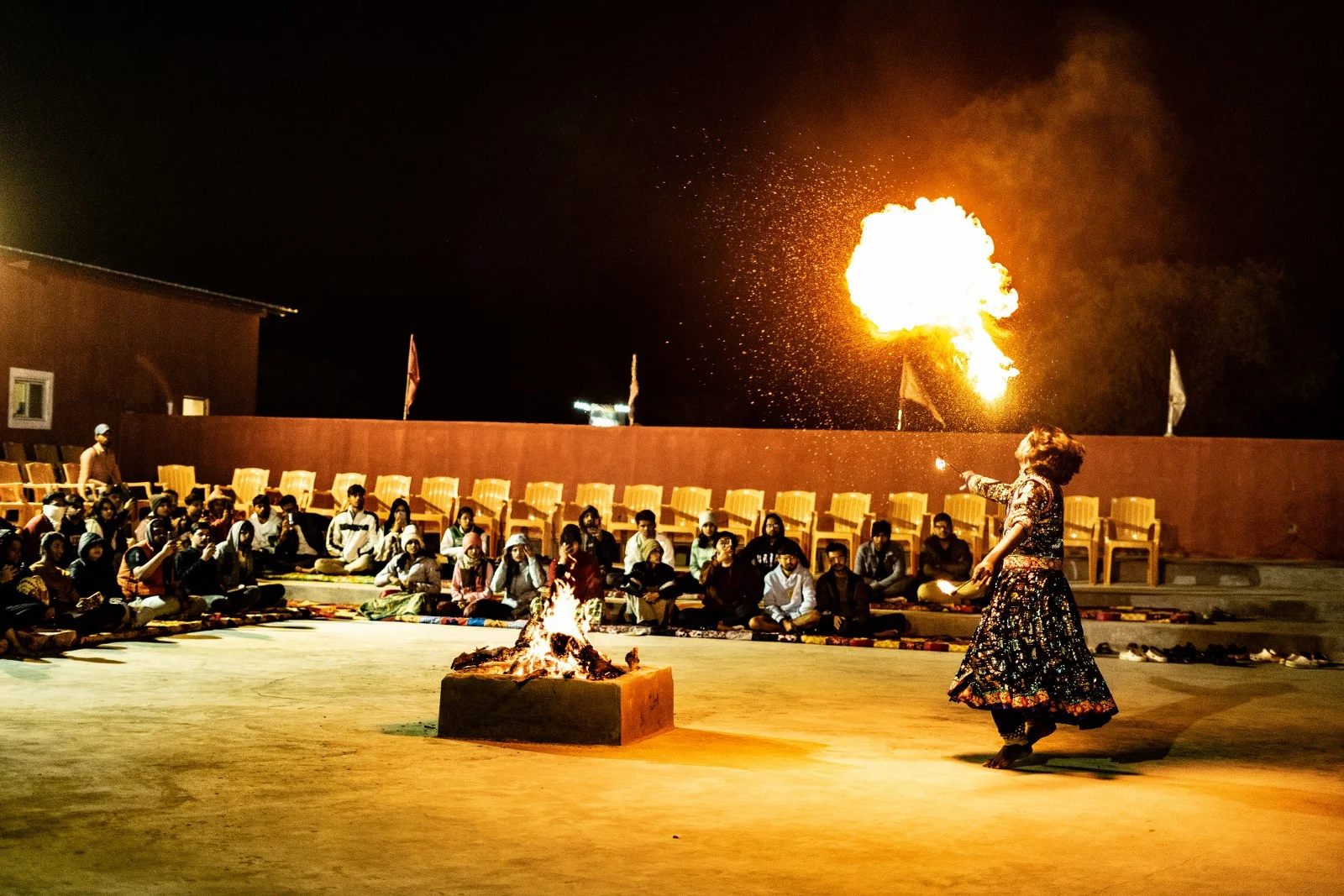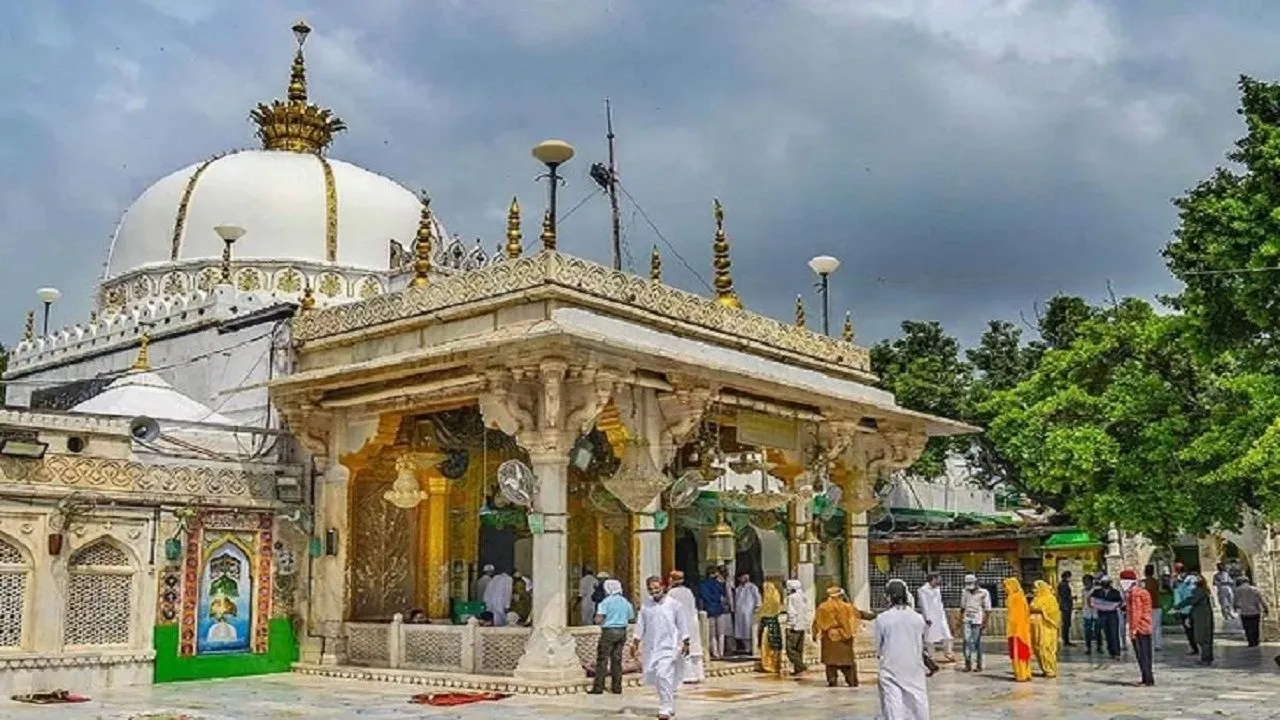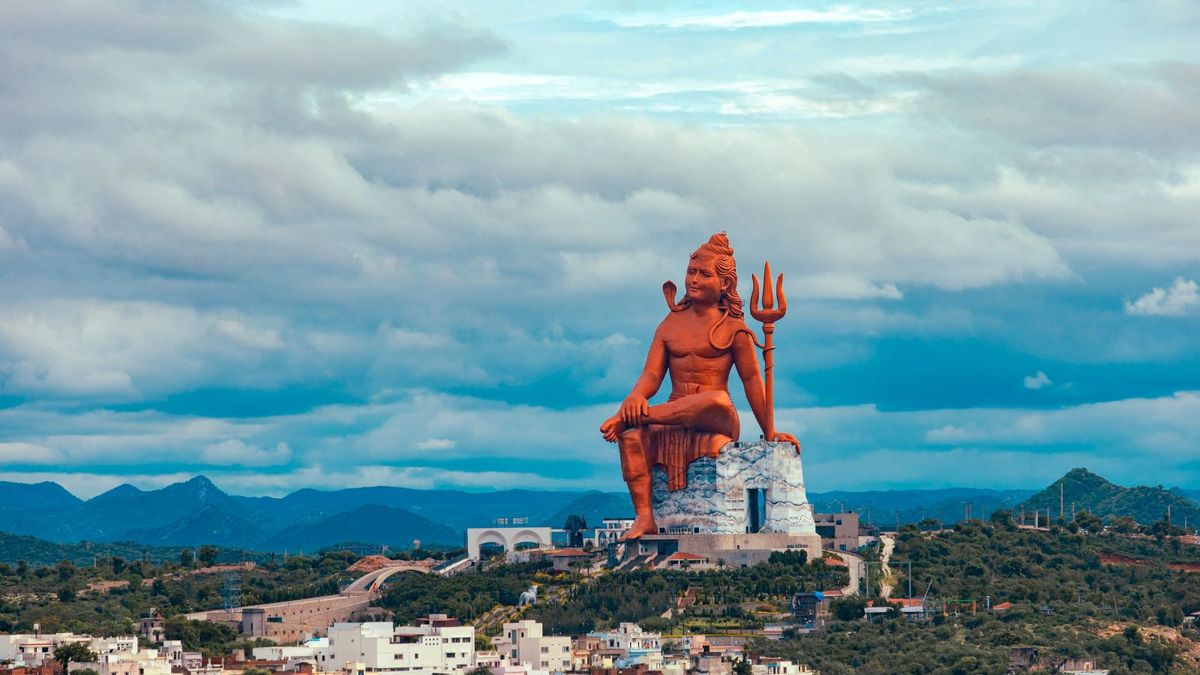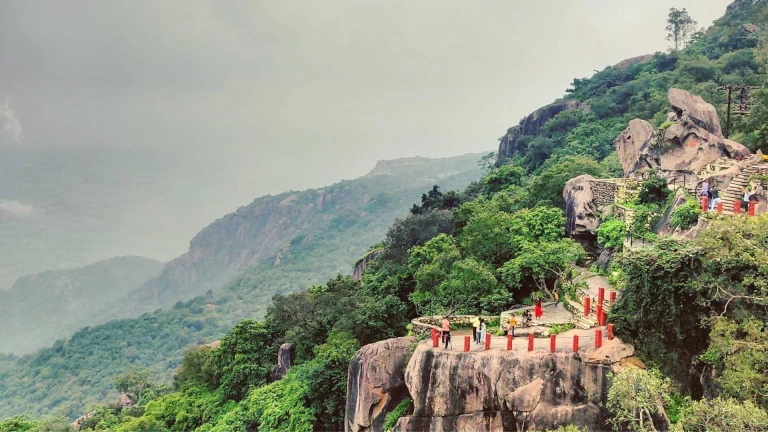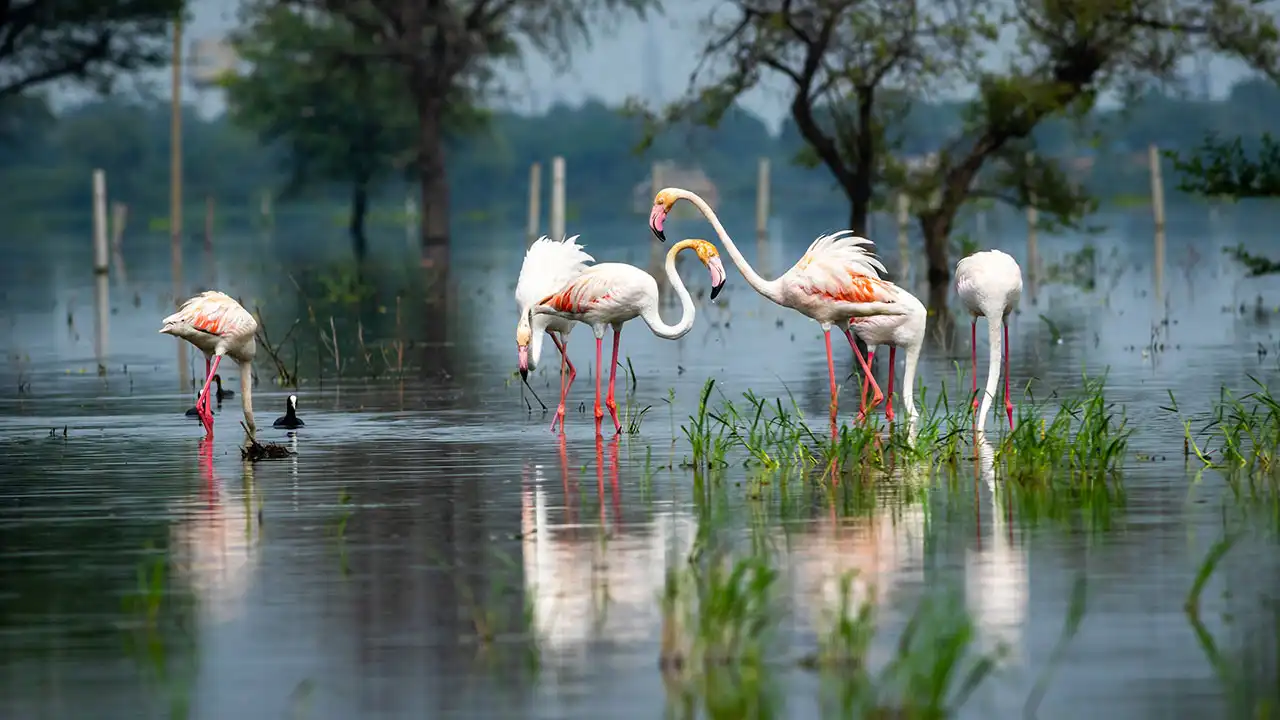Rajasthan, the land of royalty, heritage, and golden deserts, transforms into a traveler’s paradise during winter (October to March). With pleasant weather, vibrant festivals, and clear blue skies, this is the perfect time to uncover the state’s rich cultural and natural treasures. Whether you seek architectural wonders, wildlife encounters, or the thrill of desert dunes—Rajasthan has it all, and winter is the best time to explore it.
Best time to visit Rajasthan
Jaipur – The Pink City of Royal Grandeur
Welcome to Jaipur, the resplendent capital of Rajasthan, often known as the Pink City for the distinctive blush-colored facades that line its historic streets. Founded in 1727 by Maharaja Sawai Jai Singh II, Jaipur was one of India’s first planned cities, designed with precision and foresight according to Vastu Shastra principles.
A harmonious blend of royal heritage and modern vibrance, Jaipur is a feast for the senses. The city’s skyline is crowned with iconic landmarks like the Hawa Mahal (Palace of Winds), with its intricate latticework windows, and the Amber Fort, a majestic hilltop fortress that tells tales of valor and romance. The sprawling City Palace complex, still home to the royal family, and the Jantar Mantar, a UNESCO World Heritage Site and astronomical marvel, highlight Jaipur’s cultural depth.
Jaipur is also a shopper’s paradise, famed for its colorful bazaars—Johari Bazaar, Bapu Bazaar, and Tripolia Bazaar—offering everything from sparkling gemstones and hand-block printed textiles to blue pottery and traditional mojari footwear.
Beyond monuments and markets, Jaipur enchants with its heritage hotels, lively folk performances, and warm Rajasthani hospitality. Whether you’re riding an elephant up to Amber Fort, enjoying a traditional thali under the stars, or watching a sunset over Nahargarh Fort, Jaipur promises a journey steeped in splendor and soul.
Top Attractions in Jaipur – The Pink City
- Amber Fort (Amer Fort)
A UNESCO World Heritage Site, this majestic fort combines Hindu and Mughal architecture, with stunning courtyards, mirror work (Sheesh Mahal), and panoramic views of the Aravalli hills. Elephant rides and light-and-sound shows are popular here.
- Hawa Mahal (Palace of Winds)
An iconic five-story pink sandstone structure with 953 small windows (jharokhas), built for royal women to watch street festivities while remaining unseen. A symbol of Jaipur’s unique architecture.
- City Palace
A magnificent palace complex at the heart of Jaipur, it includes courtyards, gardens, museums, and royal residences. The Mubarak Mahal and Chandra Mahal are highlights, reflecting Rajasthani and Mughal artistry.
- Jantar Mantar
Another UNESCO site, this astronomical observatory was built by Maharaja Jai Singh II. It features the world’s largest stone sundial and other instruments that showcase advanced scientific knowledge of the 18th century.
- Nahargarh Fort
Situated on the Aravalli hills, this fort offers breathtaking views of Jaipur city, especially at sunset. It’s a favorite among locals and tourists for its charm and scenic location.
- Jaigarh Fort
Known for housing the world’s largest cannon on wheels—Jaivana—this fort served as the military stronghold of the Rajputs. It’s connected to Amber Fort via underground passages.
- Albert Hall Museum
Located in Ram Niwas Garden, it is the oldest museum in Rajasthan. With Indo-Saracenic architecture, it displays an extensive collection of artifacts, paintings, textiles, and sculptures.
- Jal Mahal (Water Palace)
This serene palace appears to float on Man Sagar Lake. Though entry is restricted, it makes for a beautiful photo stop, especially during sunrise and sunset.
- Birla Mandir (Laxmi Narayan Temple)
Made of white marble, this modern Hindu temple is dedicated to Lord Vishnu and Goddess Lakshmi. It glows beautifully at night and is surrounded by peaceful gardens.
- Local Bazaars
- Johari Bazaar – famous for jewelry and gemstones
- Bapu Bazaar – ideal for textiles, handicrafts, and mojari shoes
- Tripolia Bazaar – known for bangles and ironware
Udaipur – Where Royal Charm Meets Timeless Beauty
Udaipur possesses a romance of setting that’s unmatched not only in Rajasthan but perhaps in all of India. Nestled alongside the serene waters of Lake Pichola, and framed by the purple-hued Aravalli hills that stretch endlessly in every direction, the city casts a spell of old-world grandeur and natural elegance. It often hailed as the “Venice of the East,”
Fantastical palaces, centuries-old temples, intricately carved havelis, and a maze of narrow, winding streets bring a human heartbeat to Udaipur’s scenic backdrop—each alley echoing tales of regal pasts and vibrant culture.
Visitors are enchanted by peaceful boat rides, the energetic bazaars bursting with color, a thriving arts and crafts scene, and the unmistakable charm of heritage hotels that evoke the glory of a bygone era. Udaipur also invites exploration—whether on wheels, horseback, or a leisurely walk—into its lush countryside, where tradition and tranquility coexist.
Whether you’re drawn by its architectural wonders, artistic soul, or simply the promise of peace by the lakeside, Udaipur is an experience that lingers long after the journey ends.
Top Attractions in Jodhpur – The Blue City of Rajasthan
- Mehrangarh Fort
Towering over the city from a 400-ft hill, this colossal fort is one of the largest and most well-preserved in India. Explore its palaces, courtyards, museum, and take in breathtaking views of the blue houses below. Don’t miss the Sheesh Mahal, Phool Mahal, and Chamunda Mata Temple inside the fort.
- Jaswant Thada
Just a short walk from Mehrangarh Fort, this elegant marble cenotaph was built in memory of Maharaja Jaswant Singh II. Often referred to as the “Taj Mahal of Marwar,” it is known for its intricate carvings and peaceful gardens.
- Umaid Bhawan Palace
One of the world’s largest private residences and still home to the royal family of Jodhpur, a part of this grand palace is a luxury hotel (Taj Hotels), and another part is a museum showcasing royal memorabilia, vintage cars, and history.
- Clock Tower & Sardar Market
A bustling old-town market centered around the iconic Ghanta Ghar (Clock Tower). Explore colorful stalls selling spices, textiles, handicrafts, antiques, and street food. It’s a lively spot that captures the local vibe.
- Mandore Gardens
The ancient capital of Marwar before Jodhpur was established, Mandore features beautiful gardens, historic cenotaphs (chhatris), and a small museum. A peaceful, slightly offbeat escape with mythological connections.
- Toorji Ka Jhalra (Stepwell)
This restored 18th-century stepwell in the old city is an architectural gem and a popular spot for photos. Surrounded by hip cafes and boutique shops, it’s where history meets modern hangout culture.
- Rao Jodha Desert Rock Park
Located near Mehrangarh Fort, this eco-tourism site was created to restore the natural ecology of the area. It offers nature trails through volcanic rock formations and native desert vegetation.
- Machia Biological Park
A well-maintained zoological park located near Kaylana Lake, home to desert animals and birds. Great for families and those interested in wildlife conservation.
- Kaylana Lake
A man-made lake located on the outskirts of Jodhpur, it’s ideal for sunset views and birdwatching. Boating is also available.
- Bishnoi Village Safari (Optional Cultural Tour)
Experience the rural life of Rajasthan by visiting Bishnoi villages around Jodhpur. Learn about traditional crafts, spot wildlife like blackbucks, and witness eco-conscious desert living.
Jaisalmer – The Golden City of Rajasthan
Rising like a mirage from the heart of the Thar Desert, Jaisalmer is Rajasthan’s famed Golden City, named for the yellow sandstone that glows like gold under the desert sun. Founded in 1156 AD by Rawal Jaisal, this magical destination is a blend of desert mystique, royal legacy, and timeless architecture.
Top Highlights of Jaisalmer:
- Jaisalmer Fort (Sonar Quila)
One of the few living forts in the world, this UNESCO World Heritage Site is home to shops, temples, homes, and ancient structures within its walls. Built entirely of golden sandstone, it rises dramatically from the desert landscape and looks especially stunning at sunrise and sunset.
- Patwon Ki Haveli
A cluster of five intricately carved mansions, this haveli is the largest and most ornate in Jaisalmer. Its exquisite mirror work, paintings, and jharokhas (balconies) are a testament to the city’s rich merchant history.
- Sam Sand Dunes
About 40 km from the city, Sam offers the classic desert experience—camel safaris, jeep rides, and sunset views over rippling dunes. At night, enjoy folk dance, music, and campfire dinners under a star-filled sky.
- Gadisar Lake
An oasis on the edge of the city, this scenic lake was once the primary water source for Jaisalmer. Surrounded by temples and ghats, it’s ideal for a peaceful boat ride or quiet reflection.
- Salim Singh Ki Haveli & Nathmal Ki Haveli
These two havelis stand out for their unusual architecture and detailed stonework, showcasing the skills of Jaisalmer’s craftsmen.
- Desert Cultural Centre & Museum
A great place to understand local traditions, music, and desert lifestyles through curated displays and puppet shows.
Cultural Experience Jaisalmer comes alive during the Jaisalmer Desert Festival (held in February), with vibrant displays of folk culture, camel races, turban-tying competitions, and traditional performances in the dunes.
Alwar – The Gateway to Rajasthan’s Royal Past
Nestled in the lush green Aravalli hills, Alwar is one of Rajasthan’s oldest and most charming cities, often referred to as the Gateway to Rajasthan. Rich in heritage, wildlife, palaces, and folklore, Alwar offers a refreshing mix of history and nature, just a few hours’ drive from Delhi and Jaipur.
Founded in 1722 AD by Pratap Singh, Alwar was once a princely state known for its valiant Rajput rulers, stunning architecture, and close ties with Mughal royalty.
Top Attractions in Alwar:
- Bala Quila (Alwar Fort)
Standing tall above the city on a steep hill, this 16th-century fort offers panoramic views and a peek into the grandeur of Rajput military architecture. It’s 1000 ft above the city and features 15 large and 51 small towers.
- City Palace (Vinay Vilas Mahal)
A fusion of Rajput and Mughal design, this palace is known for its marble pavilions, intricate balconies, and courtyards. The palace museum displays a fine collection of rare manuscripts, weapons, and paintings.
- Siliserh Lake & Palace
A scenic man-made lake surrounded by hills and a heritage palace on its banks—perfect for boating, picnics, or a serene getaway. The palace now operates as a heritage hotel.
- Sariska Tiger Reserve
Located about 37 km from Alwar, Sariska is a major wildlife sanctuary and former royal hunting ground. Home to Bengal tigers, leopards, hyenas, and various bird species, it’s a must-visit for nature lovers and photographers.
- Moosi Maharani ki Chhatri
A beautiful red sandstone and marble cenotaph built in memory of Maharaja Bakhtawar Singh and his queen. Its architecture and frescoes are exquisite.
- Bhangarh Fort (Haunted Site)
About 85 km from Alwar, Bhangarh is famed as India’s most haunted fort and a favorite among thrill-seekers. It’s forbidden to enter after sunset, adding to its mystery.
Ajmer – The Soulful City of Sufis and Serenity
Tucked in the heart of Rajasthan and surrounded by the Aravalli Hills, Ajmer is a sacred city known for its deep spiritual energy, historical richness, and cultural harmony. Revered equally by Hindus and Muslims, Ajmer serves as a unique symbol of India’s pluralistic heritage.
Founded in the 7th century by Raja Ajay Pal Chauhan, Ajmer has long been a center of learning, pilgrimage, and royal patronage. It was once a favorite residence of the Mughal emperors, who held the city in high esteem for its spiritual significance.
Top Attractions in Ajmer:
- Ajmer Sharif Dargah
The most iconic and revered site in the city, this is the mausoleum of Khwaja Moinuddin Chishti, a 12th-century Sufi saint who preached love and unity. Thousands of devotees from all faiths visit the Dargah daily, especially during the Urs festival held annually.
- Ana Sagar Lake
A historic artificial lake built in the 12th century, Ana Sagar offers a peaceful retreat in the heart of the city. The adjoining Daulat Bagh Garden, built by Emperor Jahangir, adds to the charm.
- Adhai Din Ka Jhonpra
An architectural marvel and one of the oldest mosques in India, this structure was originally a Sanskrit college later converted into a mosque by Qutb-ud-din Aibak. It showcases Indo-Islamic architecture with intricately carved pillars and arches.
- Taragarh Fort
Perched on a steep hill, this 14th-century fort offers panoramic views of Ajmer. Known as one of the oldest hill forts in India, it once served as a military outpost and royal residence.
- Nasiyan Jain Temple (Red Temple)
A richly decorated Jain temple, especially famous for its Swarna Nagari (City of Gold) – a hall filled with gold-plated wooden figures depicting Jain mythology. A must-visit for art and architecture enthusiasts.
- Government Museum (Akbari Fort)
Located within the fort built by Emperor Akbar, this museum houses Mughal and Rajput-era artifacts, including weapons, paintings, and manuscripts.
Pushkar – The Spiritual Oasis of Rajasthan
Nestled on the edge of the Thar Desert, Pushkar is a mystical town unlike any other in India. With its sacred lake, vibrant temples, bustling ghats, and a timeless, tranquil charm, Pushkar is a spiritual sanctuary that attracts pilgrims, backpackers, and culture lovers alike.
Known as one of the oldest living cities in India, Pushkar is steeped in mythology. It is believed to have been created by Lord Brahma, making it home to one of the few temples dedicated to Brahma in the entire world.
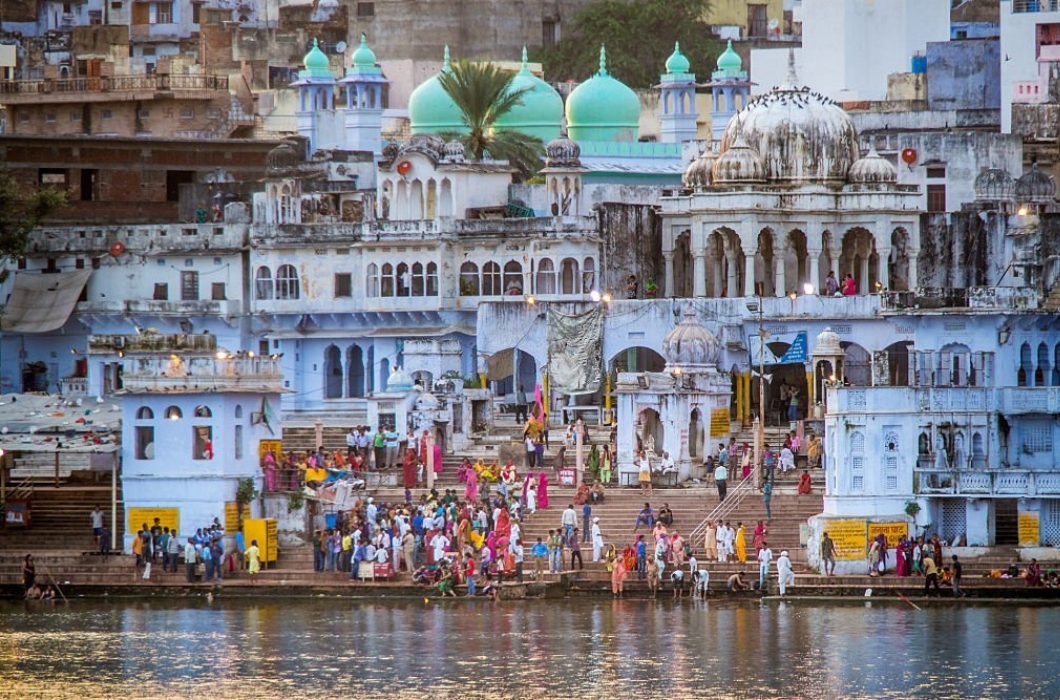
Top Attractions in Pushkar:
- Brahma Temple
The most iconic temple in Pushkar, this 14th-century shrine is dedicated to Lord Brahma, the creator in the Hindu Trinity. It holds immense religious importance and sees thousands of pilgrims every year.
- Pushkar Lake
A sacred lake surrounded by 52 ghats and over 400 temples, where devotees take a holy dip to cleanse sins. The lake’s spiritual aura intensifies during sunrise and sunset aartis (rituals).
- Savitri Temple
Dedicated to Savitri, Brahma’s first wife, this temple sits atop a hill and offers panoramic views of Pushkar and the surrounding desert. You can trek up or take the ropeway.
- Rangji Temple
A beautiful blend of South Indian (Dravidian), Mughal, and Rajput architectural styles, this temple is dedicated to Lord Vishnu in his Rangji form.
- Pushkar Bazaar
A colorful market lined with stalls selling hippie clothing, silver jewelry, rose products, leather goods, handicrafts, and more. It reflects Pushkar’s fusion of spiritual calm and bohemian culture.
Pushkar Camel Fair (Pushkar Mela)
Held every year in October–November (during Kartik Purnima), the Pushkar Camel Fair is a world-famous event that combines camel trading, folk performances, competitions, and cultural festivals. It’s one of the most vibrant celebrations in Rajasthan, drawing travelers from across the globe.
Nathdwara – The Abode of Shrinathji
Located in the Aravalli hills of Rajasthan, Nathdwara is a small yet spiritually significant town known across India as the home of Shrinathji, a revered form of Lord Krishna. Just 45 km from Udaipur, Nathdwara—meaning “Gateway to the Lord”—is a prominent Vaishnavite pilgrimage site and a center of Pushtimarg tradition, founded by the 16th-century saint Vallabhacharya.
Main Attraction: Shrinathji Temple
At the heart of Nathdwara lies the Shrinathji Temple, built in the 17th century to protect the deity from Mughal persecution. The black stone idol of Lord Krishna as Shrinathji (a seven-year-old child lifting Mount Govardhan) is the focal point of devotion.
The temple is renowned for:
- Elaborate rituals and darshans held multiple times a day
- Traditional Pichwai paintings (intricate cloth paintings depicting the life of Krishna)
- Lively religious festivals, especially Janmashtami, Annakut, and Diwali
Devotees gather in large numbers for each darshan, where the deity is adorned in different outfits and jewelry based on the time of day and season.
Cultural Significance
Nathdwara is not just a religious center—it is also a hub for art and craft, especially:
- Pichwai Paintings – Temple-inspired miniature art showcasing Lord Krishna’s life
- Terracotta and marble crafts
- Rajasthani music and devotional performances
Mount Abu – The Hill Paradise of Rajasthan
The only hill station in Rajasthan, Mount Abu is a cool, lush retreat nestled in the Aravalli Range at an altitude of 1,220 meters. Known as the “Oasis of the Desert,” it is surrounded by verdant forests, serene lakes, and ancient temples—offering a refreshing contrast to Rajasthan’s otherwise arid landscape.
Top Attractions in Mount Abu:
- Dilwara Temples
Renowned for their exquisite marble carvings, these Jain temples (11th–13th century) are considered masterpieces of temple architecture. The intricate details, especially in the ceilings and pillars, are truly mesmerizing.
- Nakki Lake
A picturesque man-made lake surrounded by hills and legends. It’s ideal for boating, evening strolls, and enjoying local snacks at lakeside cafes. The nearby Toad Rock is a popular viewpoint for photography.
- Guru Shikhar
The highest peak of the Aravallis, offering panoramic views of the surrounding landscape. It is also home to the Guru Dattatreya Temple, making it both a scenic and spiritual spot.
- Sunset Point & Honeymoon Point
These viewpoints are famous for breathtaking sunsets, where the sky paints a riot of colors over the hills—a must for photographers and couples.
- Mount Abu Wildlife Sanctuary
Spread over 290 sq. km, this sanctuary is home to leopards, sloth bears, wild boars, and over 250 species of birds. The sanctuary also features unique flora, including rare orchids.
- Achalgarh Fort
Built by the Paramaras and later reconstructed by Maharana Kumbha, the fort houses ancient temples, including the Achaleshwar Mahadev Temple.
- Brahma Kumaris Spiritual University
A renowned spiritual retreat where visitors can experience meditation, peaceful retreats, and workshops on self-awareness.
Bharatpur Bird Sanctuary – A Paradise for Bird Lovers
Also known as the Keoladeo Ghana National Park, the Bharatpur Bird Sanctuary is one of the finest avian sanctuaries in the world and a UNESCO World Heritage Site. Located in Bharatpur, Rajasthan, it spans over 29 square kilometers of wetlands, woodlands, and grasslands, making it a thriving habitat for over 370 species of birds, both resident and migratory.
Why is it Famous?
Every winter, the sanctuary becomes a vibrant hub of migratory birds from as far as Siberia, Central Asia, Tibet, and Europe. The Siberian crane, once its star attraction, used to travel thousands of kilometers to winter here (though now extremely rare or locally extinct).
What You Can See:
- Migratory Birds: Pelicans, cranes, geese, ducks, eagles, hawks, shanks, stints, wagtails, warblers, and more
- Resident Birds: Painted storks, egrets, herons, ibises, kingfishers, parakeets, owls, and cormorants
- Other Wildlife: Nilgai (blue bull), spotted deer, wild boar, jackals, and pythons
Best Ways to Explore:
- Cycle Rickshaw Safari (guided by trained bird spotters)
- Bicycles (available on rent at the gate)
- Walking Trails (great for photographers and birders)
- Boating (seasonal, when water levels are high)
Ranthambore – Where the Tiger Roams Free
Located in the Sawai Madhopur district of southeastern Rajasthan, Ranthambore National Park is one of India’s premier wildlife destinations. Once the royal hunting ground of the Maharajas of Jaipur, it is now a protected reserve famous for its population of Royal Bengal Tigers.
Spread across 1,334 sq. km, the park offers an exciting mix of dense forest, open grasslands, and ancient ruins, making every safari here a truly cinematic experience.
Top Attractions in and around Ranthambore:
- Ranthambore National Park
- Home to tigers, leopards, sloth bears, jackals, wild boars, nilgai, marsh crocodiles, and over 300 species of birds
- Divided into 10 safari zones, with Zones 1–5 being the most popular for tiger sightings
- Safari options include open-jeep and canter (20-seater) rides, guided by expert naturalists
- Ranthambore Fort (UNESCO World Heritage Site)
- Located inside the park, this 1,000-year-old fort offers panoramic views and is dotted with ancient temples, stepwells, and massive gateways
- The Ganesha Temple within the fort is still actively visited by pilgrims
- Padam Talao
- The largest lake in the park, often seen with sambar deer and crocodiles around its banks
- Look out for Jogi Mahal, a red sandstone hunting lodge by the lake
- Birdwatching
- A birdwatcher’s paradise with species like Indian courser, painted stork, crested serpent eagle, and kingfishers
- Best observed around water bodies and during winter months (Nov–Feb)
